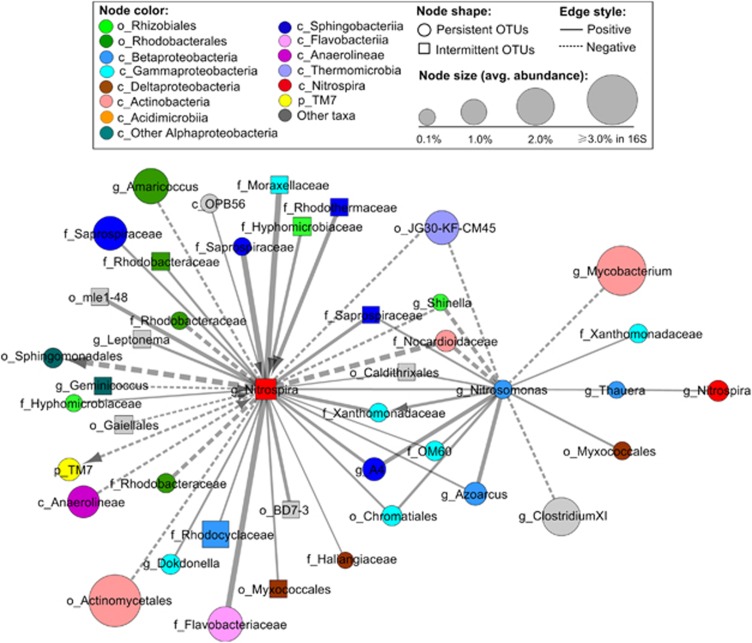Figure 5.
Preferential attachment of bacterial nodes in the species–species association network revealed deterministic bacterial co-occurrence (solid edges) and co-exclusion (dash edges) patterns in activated sludge. Only correlations that were statistically significant (P-value ⩽0.05, Q-value⩽0.01) and strong (local similarity ⩾0.6 or ⩽−0.6) are shown. Node label stands for the lowest classifiable taxonomic rank (p_, c_, o_, f_ and g_ representing phylum, class, order, family and genus, respectively) of 0.97-OTU. Nitrite-oxidizing bacteria Nitrospira tends to co-occur with OTUs of Sphingobacteria, Gammaproteobacteria and Betaproterobacteria (for example Nitrosomonas, Thauera and Azoarcus), but co-exclude with OTUs of Actinobacteria. The line thickness is proportional to the absolute value of local similarity. The arrow indicates the time-lagged correlations with arrow pointing to the lagged OTU.

